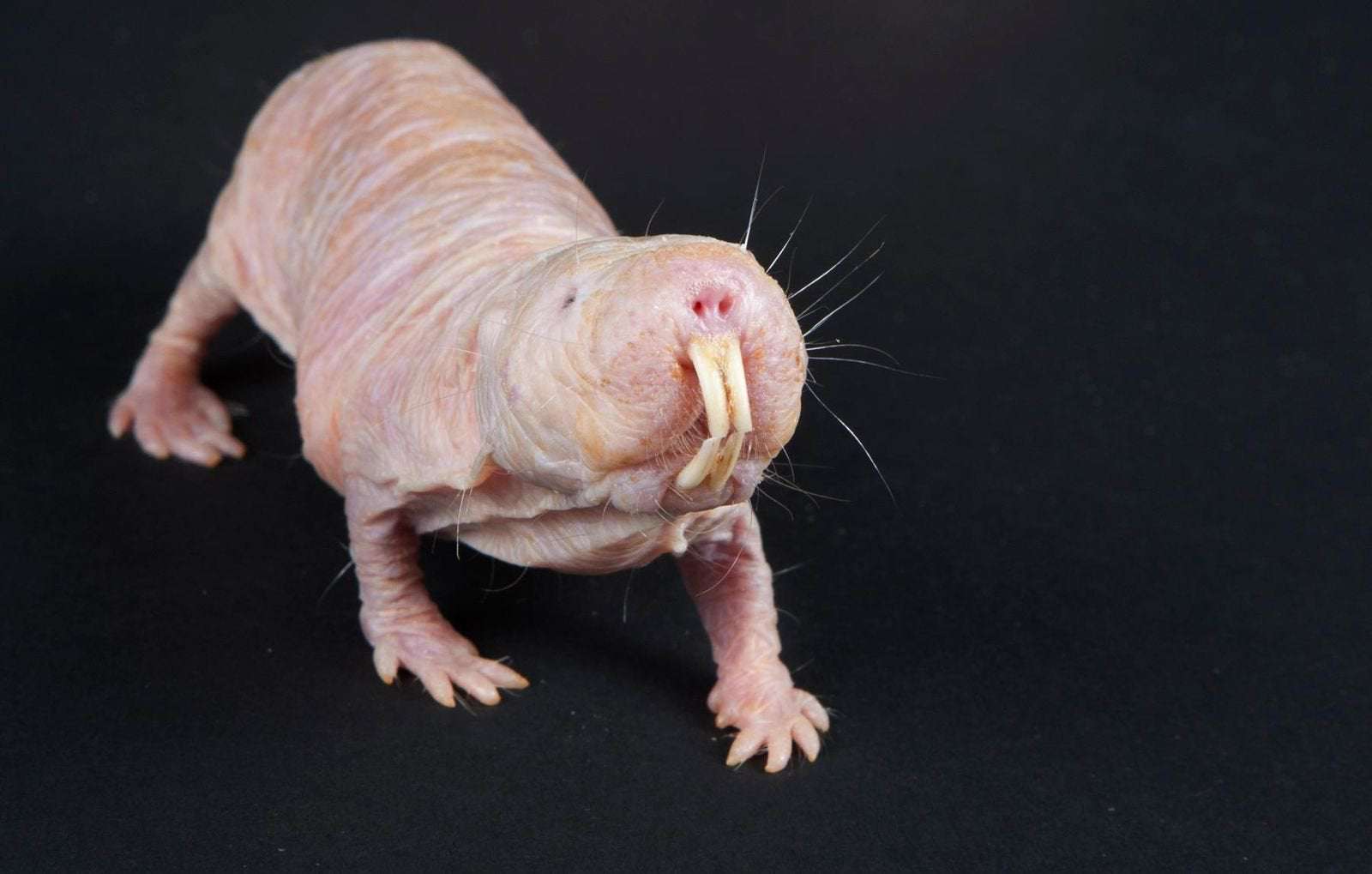The naked mole rat (Heterocephalus glaber) is a wrinkly, pink rodent that lives exclusively underground in colonies containing up to 300 individuals. They have no external ears, rely on a sense of smell, and are virtually blind. However, these sensory impairments do not stop the rodents from communicating and distinguishing themselves from foreign mole rat colonies. Scientists have found that naked mole rats have unique chirps and squeals specific to the colony that is determined by their queen, reports Sofia Moutinho for Science magazine.
Study author Alison J. Baker, a neuroscientist at the Max Delbrück Center for Molecular Medicine, and her team found naked mole rats use a vocalization called “the soft chirp” to determine who belongs within the colony and who might be a foe. Researchers knew that naked mole rats vocalized to each other, but how important this was to their social structure was unknown.
Scientists were first intrigued by the social structure of the mole rats in the 1970s because, like bees and termites, naked mole rats have a single-breeding queen and non-breeding worker rats, reports Science. Breeding matriarch social structures are rare in mammals and usually are only seen in insects.
“Naked mole rats are incredibly cooperative and incredibly vocal, and no one has really looked into how these two features influence one another,” Barker tells Jonathan Lambert for Science News.
For two years, Barker and her colleagues recorded over 36,000 “soft chirp” calls from 166 naked mole rats of seven different colonies to identify differences in pitch, peak frequency, and duration, reports Bethan Ackerley for New Scientist. (Each of the seven colonies were named after families or clans in Game of Thrones, like Baratheon and Dothraki, reports Nell GreenfieldBoyce for NPR.) A machine-learning algorithm identified dialect similarities within colonies and individual vocalizations from each of the mole rats. When the mole rats listened to the recordings, researchers observed that they would only respond to their colonies’ vocalizations and ignore other rodent communities’ dialects, reports Amy Woodyatt for CNN.
The researchers speculate that the rodents have specific calls to distinguish invaders since they are blind and live in underground tunnels, reports Science.
“They’re very xenophobic, so they want to make sure that they stay within their own tribe, having a dialect is a way to keep the social bond alive,” says senior author Gary Lewin, a neurobiologist at Max Delbrück Center for Molecular Medicine in Berlin, to Science.
The dialects may be learned rather than innate, reports NPR. When the researchers placed mole rat pups into different colonies, the introduced pups learned their new colonies’ dialect. The younger a pup was, the closer its squeaks resembles the adopted colonies dialect, reports Science News.
The mole rat colonies’ dialect, while uniform, is not constant and can change as soon as a monarch is overthrown. In two instances, when a queen was killed, the colony lost its unique sound, reports Science. When a new queen sat on the throne, the community began adopting the new dialect, which could mean that the queen somehows controls the colony’s sound, reports Science News.
“We tend to think of this communication and cooperation as positive aspects of naked mole-rat culture, but individuals are rigidly controlled in their behavior by the queen, “It gives them a huge survival advantage, but it’s a bit like living in an oppressive regime,” Barker tells Science News.
The study was well-received by other scientists who study naked mole rats. "I loved it. I really did. And I'm jealous. I wish I had come up with this idea," says Thomas Park of the University of Illinois at Chicago to NPR. Rochelle Buffenstien, an expert in naked mole rats at Calico Life Science, tells NPR that this study is a chance to see how the mole rats can learn vocalization similar to the way birds and humans do.
The researchers hope that their study leads to understanding how learned vocal communications evolved in various animals. Barker and her team have already begun looking into the mole rats genome for signs of language evolution, reports Science.

LepardVenum on May 27th, 2021 at 20:20 UTC »
shotgun cocks " ...back the way you came"
Borsao66 on May 27th, 2021 at 19:44 UTC »
You aint from round these parts is ya?
soylent_cabin on May 27th, 2021 at 19:41 UTC »
The Duolingo owl trained them